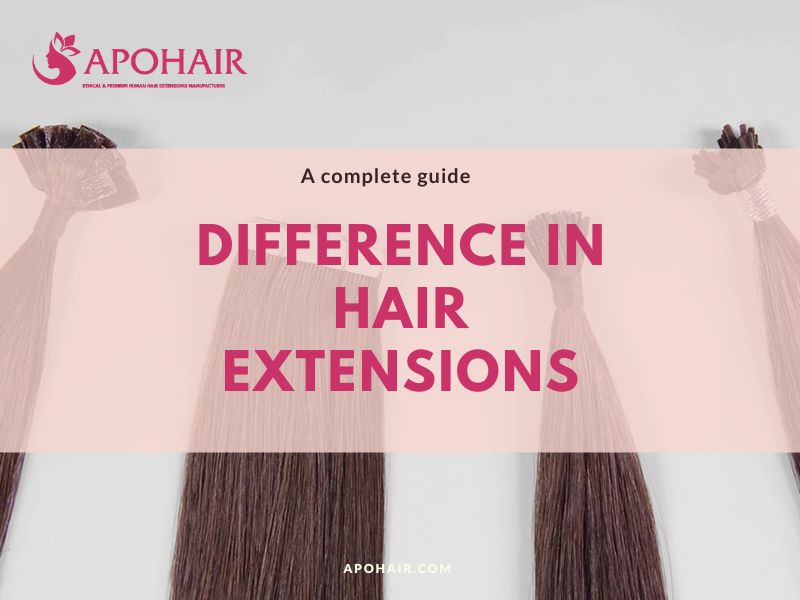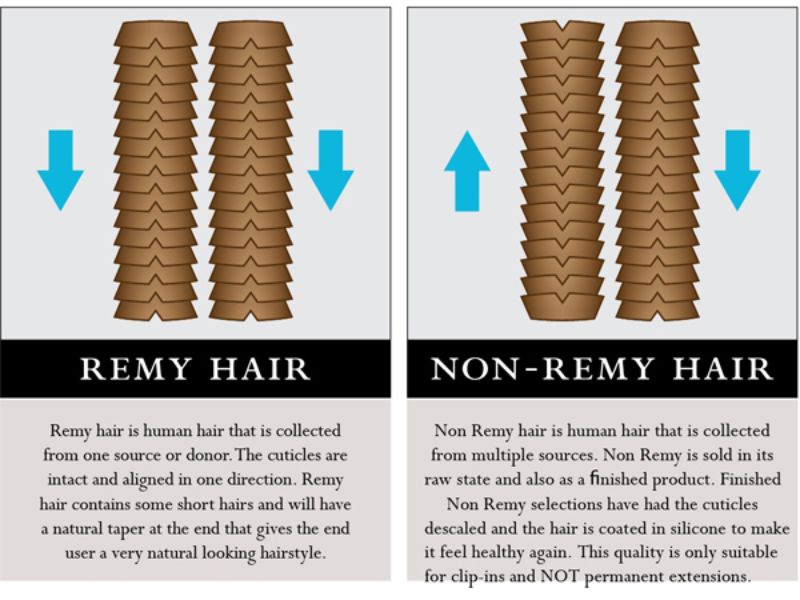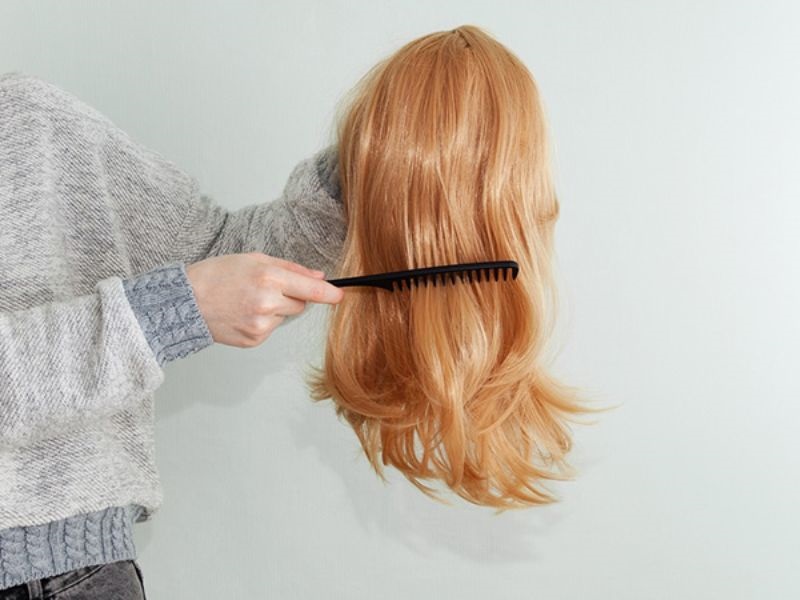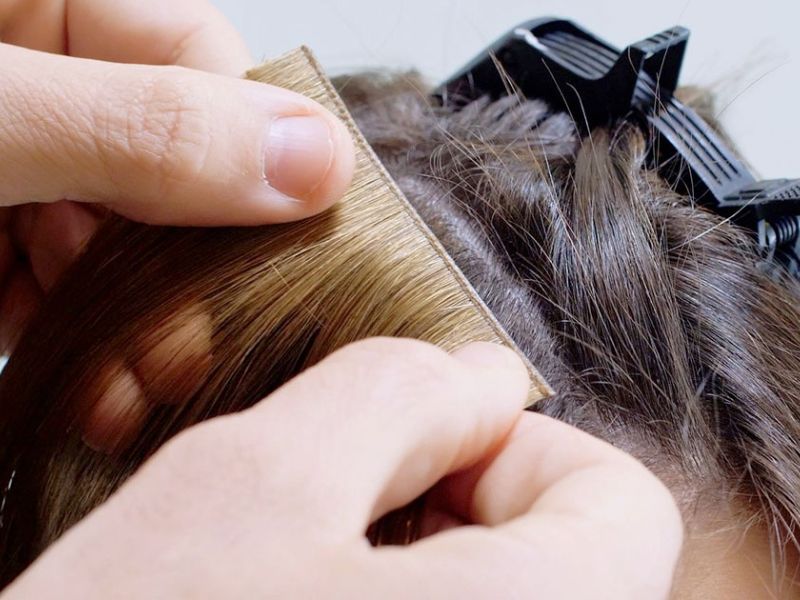Blog, Hair Extensions
Exploring the Key Difference in Hair Extensions: A Comprehensive Guide
Hair extensions have been booming year by year. With the increasing demand for hair extensions, there are now more and more choices in the market. However, with a wide range of options available, you may feel a bit overwhelmed. That’s why it’s essential to understand the key difference in hair extensions so that you can choose a type best suits your preferences and needs.So in this blog post, we will take a closer look at different types of hair extensions and explore the differences that set them apart. Let’s dive in with Apohair!

Hair Extension Materials
The first and foremost difference in hair extensions is their raw materials. Hair extensions can be crafted from different types of raw hair, each offering unique qualities and characteristics. The most popular materials used for hair extensions are human hair, synthetic hair and a blend of both.
Human Hair Extensions
These extensions are sourced from real human hair, providing the most natural look and feel. They can be treated and styled just like your own hair and provide versatile styling options. When it comes to human hair, there are three types available in the market, namely virgin hair, remy hair and non-remy hair.
- Virgin hair is of the highest quality since it’s collected from a single donor. As its name states, virgin hair is hair that has never been chemically processed and styled. Therefore, it secures the most natural look and feel. With this type of raw hair, you can bleach, dye and style just like your natural hair. But it does come with a minus point. Virgin hair extensions are not available in large quantities, and they cost more than other types of extensions.
- Remy hair is another type of raw hair that has the cuticle still intact. Yet, unlike virgin hair, Remy hair is collected from multiple donors. That’s why it acts and feels like real human hair. But since the hair is from several people, it may not get the best result for bleaching and dying. Yet, overall, Remy hair is considered of the high-quality hair extensions in the hair market.
- Non-Remy hair is hair that does not have the cuticles running in the same direction. The hair is collected massively without caring if the roots stay aligned. This type of raw hair often requires a higher concentration of acid. That’s the reason why the hair will get tangled easily and eventually come with very low moisture and a straw-like look after a time of use. Non-Remy hair extensions are available at the cheapest prices among the three types of human hair extensions.

Synthetic Hair Extensions
Synthetic extensions are made from artificial fibers. They are more affordable than human hair extensions but may lack the natural appearance and heat resistance. The greatest thing about synthetic hair is that they are pre-styled. So, you can experiment with different styles and colors without a significant financial investment.
However, synthetic hair is not an option for hairstyling with heat or chemical dye. The fibers will simply burn out when exposed to heat or chemicals. Therefore, you can’t change its style. Higher-quality synthetic hair extensions can be heat-styled, however, they generally do not last as long as human hair extensions.

Blended Hair Extensions
Blended extensions combine both human and synthetic hair. The ratio of synthetic fibers and human hair strands varies, depending on each hair manufacturer. This mixing aims to offer a balance between a natural look and affordability. However, this type of hair material does not last long and cannot be styled like pure human hair ones.
Different Types of Extensions
Another key point in the difference in hair extensions is the types of hair extensions. There are now so many types of extension available in the market to cater to different needs and preferences. Based on the time of use, we have Temporary hair extensions and Permanent hair extensions.
Temporary hair extensions
Temporary hair extensions are hair extensions that allow you to add length and volume for a short period of time. Clip-in hair extensions is the most common choice when it comes to temporary hair extensions. There are also several types of hair extensions that are easy to apply and remove within a day, allowing for instant transformation like Halo hair extensions, Ponytail hair extensions.

Permanent hair extensions
If you are looking for adding voluminous and luscious locks for a longer time, let’s consider permanent hair extensions. Depending on each type of hair extensions, permanent hair extensions can last around 4-12 weeks on your head. But the duration may change due to the skill of the hairstylist or the number of hair strands for installation.
Some typical permanent hair extensions to name are tape-in hair extensions, Sew-in weave (with the use of weft hair), Fusion hair extensions (with the use of Keratin hair extensions like Flat tip, V tip…), Microlink hair extensions (with the use of I-tip hair).

Application Process
The difference in hair extensions also lies in the application process. The installation method varies depending on the type of hair extensions you choose. Some methods require professional assistance while others can be applied at home:
- Professional Application: Techniques like sew-in, micro-link, and fusion extensions typically require the expertise of a hairstylist. They ensure proper placement and minimize damage to your natural hair.
- At-Home Application: Clip-in extensions are user-friendly and can be easily applied at home. However, it’s essential to follow the manufacturer’s instructions to prevent any damage to your hair.

Where to Buy Different Kinds of Hair Extensions?
When it comes to purchasing hair extensions, there are countless options out there. And amidst this sea of choices, Apohair shines brightly with outstanding quality and services. We offer over 1.2 million hair extensions products with many options for hair type, length, texture, and color. As a hair manufacturer, we can cater to all your hair needs, whether you are a hair user, a salon owner or a wholesaler.
Apart from the customizing service, Apohair gives a hand to support anyone who wants to start their own career path in the hair extensions industry. And that includes:
- Business guidance
- Design and build a website for your brand
- Develop content marketing for social media pages (Facebook, Instagram, …)
- Support your brand on e-commerce platforms
- Brand identity design: logos, tags, labels, packages, etc.
So, just WhatsApp Apohair at +84969672488 or leave your information on our Contact page to get support now!
Hair extensions offer a world of possibilities for transforming your look and enhancing your natural beauty. Understanding the difference in hair extensions like materials, types, and application methods is crucial for choosing the best type that suits your preferences and lifestyle. By selecting the right type of hair extensions and caring for them properly, you can enjoy the benefits of luscious, voluminous hair that turns heads wherever you go. Remember, your hair is your canvas – let hair extensions be your artistic tool for self-expression and confidence.












